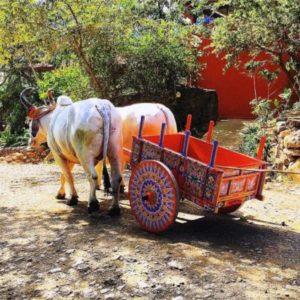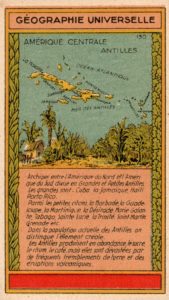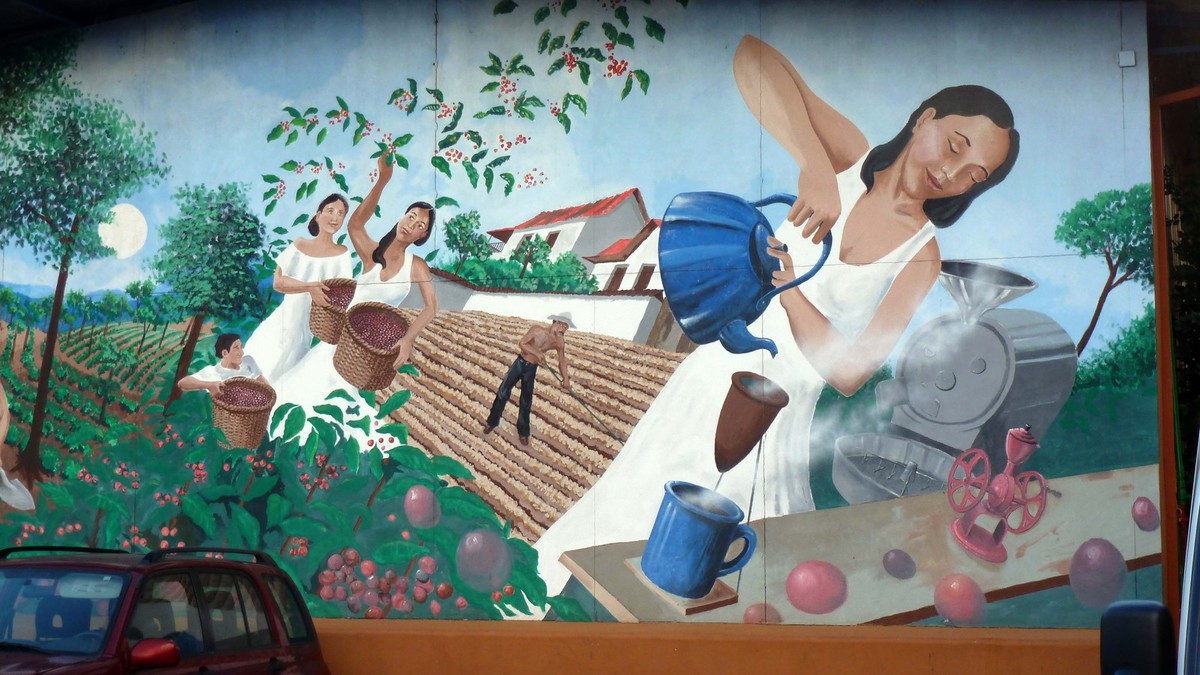After introducing you to the coffee producing countries in Africa, I will talk to Central America and the West Indies.
Coffee was brought to America in 1720 by Europeans and is considered a founding economic activity in the history of Central America. This commodity has played a very important role in the political, monetary and social evolution of the continent. The coffees that are produced there are famous for their bodies as well as their aromas.
Coffee producing countries: Central America and the West Indies
Costa Rica
Costa Rica has very good conditions for creating an exceptional coffee. The country has a high plateau, a mild and temperate climate, a decent humidity, a rich volcanic soil, a certain political stability focused on trade. The only two problems that can hinder coffee production are cyclones and earthquakes.

In Costa Rica, only a washed Arabica and grown. The best coffees are usually those grown around San José (the capital) and the neighboring towns of Herdia and Alajuela. We can also mention the region of Tarrazu which produces some excellent coffees. The coffee beans are classified according to the region (Tarrazu, Dota …) and according to the owner / operator.
The extracted coffee is almost always very aromatic even if sometimes they miss a little body. But its scent makes us quickly forget this little detail.
Roasting should be light with this coffee. Too much roasting coffee is in this case a sign of a hidden aim. If the roasting is strong, it will destroy the acidity of this coffee.
Cuba
In Cuba, since the middle of the eighteenth century, a clean, fragrant, carefully processed and classified Arabica has been cultivated. Cuban coffee is less acidic than coffee produced in neighboring countries because the country does not have high altitudes.
Cuban coffee is very pleasant when it is heavily roasted.
Dominican Republic
Formerly called Hispaniola then shared between France and Spain in 1697, the Dominican Republic produces since the eighteenth century a good Arabica. The best vintage, known for its acidity and body, is grown in southwestern Barahona. We can also mention the Bani and Ocoa coffees which are very good even if less acidulated than the grand cru. Both come from the slopes of the southern tip of the central mountain range.
Cibao grains are more ordinary. Strong roasting accentuates the aromatic notes of Ciao, Bani and Ocoa coffees.
Guadeloupe
Guadeloupe cultivates small quantities of a coffee that was once internationally renowned and was described by Philippe Jopin as “one of the best crus in the world […] difficult to replace for lovers of big coffees”.
Guatemala
Coffee is the main crop of this country. However, a very large part of the population is still living in poverty. The coffee plantations are either huge farms or small productions by poor farmers. Guatemala has not yet sought to replace its old varieties of coffee, such as bourbon, with other high-yielding varieties, but not so good. There is support in this country to encourage smallholders to continue producing high quality, but low yielding coffee.
Guatemalan coffee is considered one of the best in the world and has all the same taste profile (although it varies from one region to another), namely “medium to very full-bodied, perfectly balanced, with good acidity of smoky, spicy and chocolate complex notes “. The famous Guatemala City, gave its name to the biggest Guatemalan cafes. The city of Cobán, evokes an altitude coffee with exquisite acidity. There are several other Grand Cru regions, but Huehuetenango, in the Westeast is increasingly recognized for its unique acidity and scents.
Haïti

When sharing Hispaniola in 1697, France received Haiti. After his emancipation in 1804 followed 2 centuries of political instability. This country is poor and its economy depends a lot on coffee. Unfortunately the classification of coffee is complicated because the coffee beans are classified by their size, altitude, taste quality, beans defective or have pebbles.
The old coffee trees, which grow almost in the wild, still produce beautiful blue beans of the Typica variety. These are usually treated dry by the peasants themselves.
Suitable roasting is generally of the medium type. Haitian coffees are biologically pure (fertilizers, pesticides and fungicides are too expensive). Their coffees are light, sweet, with a dense body, and low acidity. One of the references is SHG coffee.
Honduras
Producer of a good Arabica washed, with a pleasant fragrance and good acidity despite a slight lack of body, it is of great quality and pleasant mixture.
Jamaica
Producer of a famous Blue Mountain, Jamaica cultivates at the extreme eastern tip of the island. The production is held by only three houses. We find several names: “High Mountain Suprem” and “Prime Washed Jamaica” (which are not at all Blue Mountain coffee (JBM) which is marketed in cask.

All exported coffees are guaranteed by the Coffee Industry Board. However, consumers are not immune to fraud. Because when we are sold roasted bags it is difficult to see if it comes from a JBM origin or from a Blue Mountain from another region of the world. In truth, they sell more than the region can produce.
Blue Mountain is a high quality coffee that is subject to the same ecological concerns as other coffees (that is, sometimes harvests are bad). A good harvest gives us a balanced cup, with a nutty taste, strong acidity, but not dominant. The flavor is clean and interesting. Despite the whole body is a bit weak forcing people who like full-bodied coffee to increase the dose. A lower harvest (especially in recent years have been overproduced and probably a less careful treatment), can be quite disappointing and easily exceeded by a Costa Rican coffee, Guatemalan or even Cuban.
Martinique
It was in Martinique that was planted in 1720, by Captain Gabriel de Clieu, the coffee tree from the royal greenhouse of Louis XIV. This was the first specimen of coffee to have penetrated this hemisphere.
Today, coffee has almost totally left Martinique.
 Mexico
Mexico
Mexico is a farmer of several medium quality Arabicas, mostly washed. Some varieties grow at altitude offering interesting tastes.
The state of Veracruz, the region of Coatepec produces an excellent Altura characterized by a light body. Oaxaca, the extreme southwestern state, gives its name to good cafes, including Oaxaca Pluma. Chiapas, cultivates great qualities of good Arabicas marketed under the name Tapachla.
Nicaragua
All coffees produced are wet processed Arabicas. Matagalpa and Jinotega, two neighboring towns, produce the best coffee in the country. The local version of the Maragogype variety features the world’s largest coffee beans.
Panama
The regions of Chirique and Plate produce washed Arabicas of altitude of rather good quality.
Puerto Rico
Recognized for its production of the best wines of the world, Puerto Rico is supplier of the Vatican until 1968. Subsequently they stopped exporting coffee, because they had to import some (local production was not enough in the country) .
Finally, with new American minimum wage laws, coffee production practically stopped (because they could no longer pay the wage demand). Only small farmers who have joined cooperatives. They produce high quality coffee called high quality.
Salvador
The country relies heavily on the production of its Arabicas for its economy. Pipil is the name of an excellent organic coffee.
Trinidad and Tobago
These are two small islands that grow Robusta in small quantities primarily to produce soluble coffee.
Other coffee producing countries
To discover coffee producing countries in other continents: Africa, South America, the South Pacific and Southeast Asia, please click on the corresponding links. Or, go back to the general summary.
